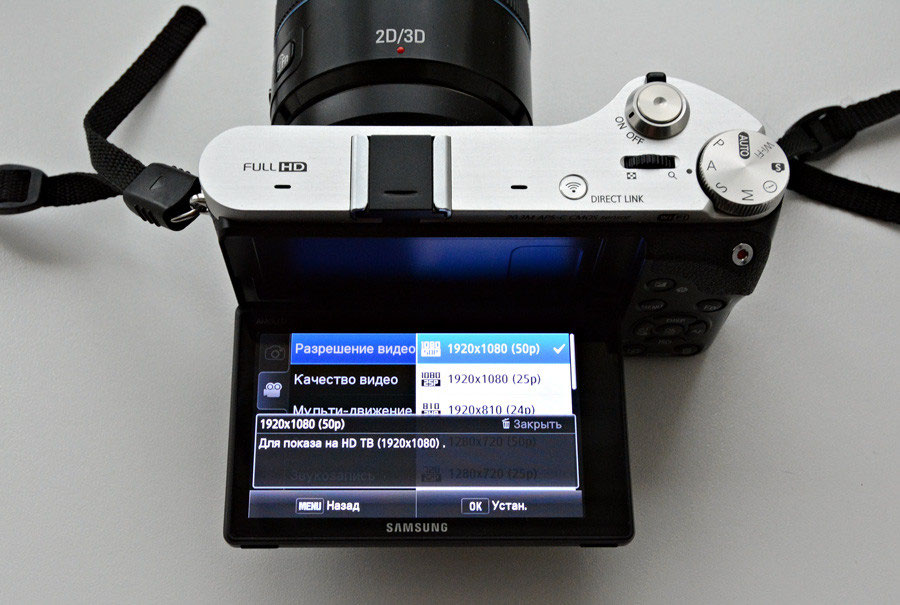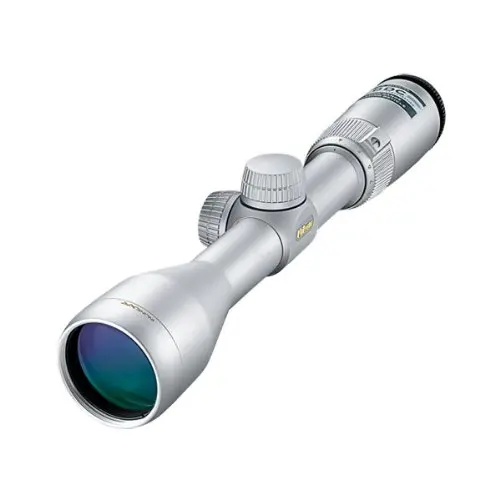Review of the NETGEAR XR300 Nighthawk Pro Gaming Router
For just about any online gamer, having a stable connection is pretty important. The kind of brief internet hiccup that might otherwise not bother a person can be a source of immense frustration for a competitive player. Even if you’re a more casual player, in the wrong game, a little bit of lag can ruin everything. Your voice chat, your stream, your streaming video, the list goes on.
NETGEAR XR300 Nighthawk Pro Gaming Router
The Nighthawk series isn’t necessarily a gaming router series, but in its ranks you’ll find a number of excellent gaming routers. The XR300 is among the latest in the series, yet it’s already won a number of notable awards, and is now considered to be one of the best gaming routers on the market.
Note: At no extra cost to you, we may earn a commission for purchases using our links. Learn more.
Why? The XR300 has the potential to considerably reduce gaming latency by working to prioritize your network traffic. With a couple of minutes of configuration, you can easily tweak virtually any aspect of your connection. Quite useful to help stabilize your ping, ensure your local connection is lossless, or otherwise reduce network lag.
You don’t actually need much bandwidth to enjoy games. At least, not unless you’re streaming video. In any case, the XR300 provides a full array of features aimed at non-gaming tasks. You could probably think of this as more of an entertainment router than a gaming router per se.
Build & Design
The XR300 measures roughly 8 x 6 x 2.5 inches. Similar to most Nighthawk routers, the shape of the XR300 is quite distinctive. Even the number of antennas is a little unique. It feels like most routers end up with either one antenna, two antennas, or four and up. The XR300 is in the unique position of running three.
Moreover, all three are attached to the backside. It’s increasingly common for routers like the XR300 to have their antennas positioned on at least three sides of the device, which can be a minor inconvenience for certain types of placement and installation.
Antennas aside, along the front side you’ll find a total of ten indicator LEDs. They give you information about the power status of the router, the 2.4/5G bands, the status of the connection to your internet service provider, and the individual connectivity of each wired connection.
And at the far end of those indicators, you’ll find a pair of analogue buttons. The buttons actually easy to miss because they match the style of the LEDs, so they almost look like just more lights. But these are actually wireless extension buttons to help you get new devices on the network with the single press of a button.
Inputs & Interface
The backside of the XR300 is pretty intuitive because the backside I/O is well organized and straight forward. Way off on the right side, you’ll find a DC power port and a power on/off switch. Towards the center, you’ll find a yellow WAN port, which is offset from LAN ports, and highlighted with a separate color to ensure the XR300 is approachable to novice installations. And towards the left side, you’ll find four gigabit Ethernet ports, and a reset button that’s been recessed within the chassis.
And towards the left side, you’ll find four gigabit Ethernet ports, and a reset button that’s been recessed within the chassis.
Quickly getting back to the antennas, it’s worth noting the XR300’s antennas are a high performance design, made to reduce interference while maximizing network coverage. Along with the help of beamforming, they’re able to extend your network pretty effectively across the 2.4 GHz band. But the 5G band is pretty much the same as it is on any other router, requiring line of sight for connections.
Front Facing USB Access
When you’ve got six wires running from the backside of this router, and it’s placed up against a wall, you don’t necessarily have great access to the backside. And getting access to the backside might require you to pick up the router, disturb those wires, or potentially even turn off your network. Pretty inconvenient if you need to get back there, right?
Interestingly, the XR300 was built with its USB access port on the front face of the router. Somewhat similar to the reset button, the USB slot is recessed within the chassis, but not quite to the same degree. This front placement is a great idea, though. Even though it might not be the best aesthetic decision, anyone who’s using the USB port on a regular basis will be able to get much better access to the XR300.
Somewhat similar to the reset button, the USB slot is recessed within the chassis, but not quite to the same degree. This front placement is a great idea, though. Even though it might not be the best aesthetic decision, anyone who’s using the USB port on a regular basis will be able to get much better access to the XR300.
The Control App
Using the Netgear control app, you can get a detailed picture of how you’re spending bandwidth. That includes a picture of who’s currently chewing through bandwidth on the network, and how much they’re using. If you want to take things a step further, it’s possible to actually establish control limits to help prioritize some devices while blocking others. Voice assistants tend to absorb a lot of bandwidth in particular, so they can be worthy of management.
Likewise, the user interface for their DumaOS dashboard is pretty approachable. Even though configuring a router can be a pretty technical task, Netgear managed to make things a bit easier to understand. Whether you’re trying to mitigate the effects of network congestion, or ensure it doesn’t affect specific devices, you’ve got an array for quality of service options. And even novices should be able to move through the more “advanced” options.
Whether you’re trying to mitigate the effects of network congestion, or ensure it doesn’t affect specific devices, you’ve got an array for quality of service options. And even novices should be able to move through the more “advanced” options.
Hardware & Network Potential
The XR300’s quality of service technology is powered by a modest 1GHz dual core processor. Not super powered by any means, but it’s powered appropriately to the requirements of the XR300’s anticipated network load. With its assistance, even when you’ve got a congested network filled with dozens of different devices, having too many connections on your LAN won’t cause gaming lag.
Imagine you might have six different smart-home devices making an independent connection to your router, and you have six more smartphones doing the same. For a lot of modern routers, that kind of scenario means anyone who’s trying to enjoy a game will start running into some semi-serious network problems.
One possible outcome is that your ping creeps up a little higher. Another likely outcome is that you’ll start to enjoy some lag spikes when other devices start to interact with the network for any sustained period of time. Short bursts of heavy lag can be pretty devastating in certain types of games, especially games where rapid response times are necessary.
Another likely outcome is that you’ll start to enjoy some lag spikes when other devices start to interact with the network for any sustained period of time. Short bursts of heavy lag can be pretty devastating in certain types of games, especially games where rapid response times are necessary.
Depending on how the game’s anti-cheat is configured, these micro-stutters are even capable of causing you to lose your connection to game servers. In order to stabilize your connection, the XR300 uses anti-buffer bloat technology, which is basically a means of creating an express lane specifically made for your games. Consequently, lag which isn’t provided by your ISP can generally be avoided.
Security Features
With respect to its security features, the XR300 is pretty average. You can establish parental settings, and create separate guest networks. That includes the ability to establish specific controls over what content can be visited, when it can be visited, and how much bandwidth they can use.
The only way in which the XR300 really shines here is in transparency. It’s great at letting you know what’s going on over the network. But to its credit, the XR300 does add on another layer of customization potential by letting you determine minute-by-minute bandwidth rules.
You also have some basic access to VPN features, but really only as many as a gamer might need. It doesn’t quite have the same level of robust VPN support that you might find from an enterprise tier business router. But you shouldn’t have a problem getting any existing VPN services you use to play-nice with the XR300.
Other Considerations
Similar to almost any modern Netgear router, the Nighthawk XR300 supports automatic firmware updates. You don’t have to spend time checking for updates or bothering to install them. The router basically takes care of itself. Pretty cool.
To some degree, the idea of a gaming router is a little silly. Because plenty of non-gaming routers still have the ability to help you make similar game-facing customizations. For instance, you might still be able to prioritize traffic with many mid-shelf routers that have nothing to do with gaming.
For instance, you might still be able to prioritize traffic with many mid-shelf routers that have nothing to do with gaming.
But the XR300 is really about making those features highly accessible, bundling them in one place, and taking as much off your plate as possible. It’s about prioritizing games from the first moment you start using the router, so you don’t have to spend a bunch of time setting things up every time you play something new.
Different types of games have different types of networking standards. Some games will kick you out the moment they detect you’re lagging; others don’t mind as long as your ping doesn’t exceed 5000ms. Whether or not the XR300’s game-facing features can really help you does at least partially depend on the sort of games you’re playing.
Who Should Choose the NETGEAR XR300 Nighthawk Pro Gaming Router?
The NETGEAR XR300 Nighthawk Pro Gaming Router is a pretty good choice for gamers who aren’t necessarily networking wizards. It’s also a good choice for lazier people who don’t want to have to bother with setting up their gaming settings in a more laborious process.
It’s also a good choice for lazier people who don’t want to have to bother with setting up their gaming settings in a more laborious process.
Of course, you don’t actually need to be a gamer to get the best benefits this router has to offer. Its abilities can be applied equally well to things like streaming content. The same things that help make your games smoother can be turned to making your videos a bit smoother, too. You could easily prioritize your connection to Netflix, YouTube, or a similar streaming service.
If you were looking to fill an incredibly large area with Wi-Fi, the XR300 would not be able to do that on its own. But it is possible to conjoin the XR300 with other units, and effectively extend the already formidable size of its network radius. With that said, XR300 is a pretty good choice for someone interested in a future-proof network at an effective price.
Please consider sharing:
Note: At no extra cost to you, we may earn a commission for purchases using our links. Learn more.
Learn more.
Nighthawk Pro Gaming XR300 Review
Reading Time: 5 minutes
The Nighthawk gaming routers are considered to be some of the better gaming routers around, they stabilise ping, navigate lag spikes and allow on the fly bandwidth management.
I’ve had the XR300 for over four weeks, so let’s look at the pros and cons of the router.
The Nighthawk router straight out of the box looks menacing next to your average ISP (Internet Service Provider) junk you get sent. It has a striking design that has smooth sharp edges and a sloping down frame. Two big vents adorn the sides for airflow, and three massive antennas protrude out as if clamouring for some radio waves. I like it. It’s a statement piece.
It boasts 4 Gigabit Ethernet Lan ports and 1 USB 3.0 and Dual-Band WiFi 2.4GHz / 5GHz.
The number of connection issues I would have with my SuperHub 2 was horrid, intermittent restarts and general poor connectivity pained me, especially when you consider you’re paying over £60 a month for internet services. Hopefully, the Nighthawk will save me.
Hopefully, the Nighthawk will save me.
Out of the Box
The setup was simple, switch your current router to modem mode and connect the Nighthawk with the included ethernet cable and plug it into the wall (obviously, for note, you plug your ISP supplied modem in the WAN port on the back). Launch a web browser of your choice, and login, follow the prompts, set up a local user account and boom, you’re online in minutes.
Now there’s a lot of things going on in the primary router dashboard visually;
- Internet Status
- Guest Wireless Status
- Wireless Status
- Quality of Service (QoS)
- Device Manager
- CPU Usage
- Installed R-Apps
- Network Overview
- System Information
- Settings
There are 2 I used primarily for the entire time of having the router, Device Manager and QoS.
Device Manager surprised me a lot. Since installing the router, there have been 31 devices connected to my router. Now all those aren’t mine, 21 are currently offline, so friends devices, iPads and other units that have connected (each are nameable or have an identifier), but I now sit with ten online, 4 of those are on standby. You can also rename, change device type and block or delete those connections from that screen, handy for shutting off the kids iPad or annoying the wife and blocking her iPhone.
Now all those aren’t mine, 21 are currently offline, so friends devices, iPads and other units that have connected (each are nameable or have an identifier), but I now sit with ten online, 4 of those are on standby. You can also rename, change device type and block or delete those connections from that screen, handy for shutting off the kids iPad or annoying the wife and blocking her iPhone.
The second, QoS, gave me the ability to allocate bandwidth to each of those devices currently attached to the Nighthawk. Both upload and download. I could restrict the bandwidth; specifically, when it detects high priority traffic, in the Nighthawks default, those are games or when gaming. We run with Netflix, Now TV and Amazon Prime, so streaming content without buffering is always preferred. I would limit other traffic to 70% and give the PS4 priority when doing this. However, I didn’t notice a difference when streaming, but it would show more when playing online. For example, when hosting a custom game mode in Modern Warfare.
Now what I liked about each section of the router was the little question mark that would take you step by step through the setting and explain it in more detail. No searching for a random sentence or keyword, it holds your hand through the process.
Need for Speed
I have a pretty decent broadband package and get around 200mb down and 20mb up, but latency and home connectivity was always an issue, especially with localised network throttling at peak times.
However, I noticed in the first week; I had to restart the router once for some glitchy issues with the iOS app and WiFi bugs. I’ll get to those momentarily.
Usually wandering around the house, I would find black spots or slower areas that would inhibit surfing or streaming. With the Nighthawk I’ve had much less of that and haven’t noticed myself getting frustrated by slow connection speeds.
Now the iOS App!
I was intrigued to see what the app offered, is it on par with the router dashboard or is it like all other apps and limited, well it sat somewhere in the middle.
The app offers;
- Device Manager
- Internet Speed
- WiFi Settings
- Guest WiFi
- Traffic Meter
- Support
Even though those settings look promising, my biggest gripe is you can’t change device bandwidth allocation on the fly, one of the significant features of this router. You can switch devices on and off, and run a speed test, but if I wanted to “traffic manage” a little more, I’d have to load in via a laptop or desktop browser.
Connectivity
There was a specific time when my devices wouldn’t connect. I had WiFi confirmation in my device settings, but the router wasn’t broadcasting correctly. I would launch the iOS app, and it would show connection failed, or issues connecting with NetGear. I realised after that the router required a firmware update, which has so far solved my problems. But if you’re not comfortable in doing this, or can’t find the setting buried in the router login, how frustrated would you be that it doesn’t auto-update or prompt you?
End Game
The Nighthawk XR300 delivers an incredible home network performance that blows any ISP standard router out of the water. I appreciate that it’s hard to justify spending money on a router when you get one for “free” in your subscription but technology has moved on.
I appreciate that it’s hard to justify spending money on a router when you get one for “free” in your subscription but technology has moved on.
4K Quality streaming services, families with multiple devices and smart accessories, your home network is more congested than ever.
Buy them here. Amazon, Ebuyer Scan or Argos.
Netgear Nighthawk Pro Gaming XR300
46points
Netgear Nighthawk Pro Gaming XR300
Netgear Nighthawk Pro Gaming XR300
Why is Netgear Nighthawk Pro Gaming XR300 better than others?
- WiFi speed?
1750Mb/s vs 1368.18Mb/s - External antennas?
3 vs 2.28 - LAN ports?
4 vs 3.75 - Volume?
3233.61cm³ vs 3449.3cm³ - Thickness?
62mm vs 118.01mm
Which comparisons are the most popular?
Netgear Nighthawk Pro Gaming XR300
vs
Netgear Nighthawk Pro Gaming XR1000
Netgear Nighthawk Pro Gaming XR300
vs
Netgear AC1750 (R6400)
Netgear Nighthawk Pro Gaming XR300
vs
Asus RT-AC66U
Netgear Nighthawk Pro Gaming XR300
Features tri-band technology
✖Netgear Nighthawk Pro Gaming XR300
Devices that support three wireless bands can accommodate more devices on the network and offer faster speeds (up to 4000 Gbps in the 5 GHz band).
CPU speed
Unknown. Help us offer a price.
The speed of the central processor indicates how many processing cycles per second the processor can perform, taking into account all its cores (processors). It is calculated by adding the clock speeds of each core or, in the case of multi-core processors, each group of cores.
Wi-Fi version
Wi-Fi 5 (802.11ac), Wi-Fi 4 (802.11n)
Wi-Fi versions supported by the device.
Equipped with dual band technology
✔Netgear Nighthawk Pro Gaming XR300
Dual band devices allow you to transfer data quickly in the latest 5GHz band using modern standards (such as 802.11n, 802.11ac). If necessary, the old 2.4 GHz band can be used.
RAM
Unknown. Help us offer a price.
Random access memory (RAM) is a form of memory used to store work data and machine code currently in use. It is a temporary, fast-access virtual storage that can be read and modified in any order, allowing fast data processing.
It is a temporary, fast-access virtual storage that can be read and modified in any order, allowing fast data processing.
has a slot for memory cards
✖Netgear Nighthawk Pro Gaming XR300
The device has a standard slot for memory cards (SD, MicroSD, etc.), so you can either expand the internal memory with available memory modules, or you can Easily retrieve data such as photos from a memory card.
DNS relay present
✖Netgear Nighthawk Pro Gaming XR300
The DNS relay (or cache) is used to temporarily store query responses on the router. This means that the same request, but sent from another computer on the same network, will receive a faster response.
built-in memory
Unknown. Help us offer a price.
Built-in memory is the built-in space for storing system data, applications, and user data in the device. With more internal storage, you can store more files and apps on your device.
Antennas
external antennas
The more antennas, the stronger the signal. To improve the signal, the antennas can be rearranged, and if necessary, replaced with longer ones.
Detachable antennas available
✖Netgear Nighthawk Pro Gaming XR300
These antennas can be removed when not needed or replaced with longer ones if needed.
internal antennas
Unknown. Help us offer a price.
The more antennas, the stronger the signal. Devices with internal antennas take up less space.
Security
Built-in network firewall
✔Netgear Nighthawk Pro Gaming XR300
Network firewall protects your computer network from unauthorized access.
DoS protection included
✖Netgear Nighthawk Pro Gaming XR300
DoS protection technology protects network content from DoS (Denial of Service) attacks. These attacks flood the network with requests to the server, slowing down overall traffic, sometimes causing long-term disconnects.
These attacks flood the network with requests to the server, slowing down overall traffic, sometimes causing long-term disconnects.
supports WPA3
✔Netgear Nighthawk Pro Gaming XR300
WPA3 is a more secure way than the previous (WPA2) way to connect to a Wi-Fi network. Individual data is better encrypted and harder for hackers to get the password.
WPA2 Enterprise Support
✖Netgear Nighthawk Pro Gaming XR300
This is a router feature designed to authenticate users to an external server using a username and password.
supports WPA2 technology
✔Netgear Nighthawk Pro Gaming XR300
WPA2-PSK is a network security method using WPA2 (Wi-Fi Protected Access 2) technology and a pre-shared PSK password.
MAC filtering available
✔Netgear Nighthawk Pro Gaming XR300
This is a security feature that restricts network access to only specified devices with their unique MAC addresses. This approach can improve security, but there is a risk that the user may lose the device.
This approach can improve security, but there is a risk that the user may lose the device.
L2TP Passthrough option available
✔Netgear Nighthawk Pro Gaming XR300
one device to another over the Internet.
IPsec Passthrough option available
✖Netgear Nighthawk Pro Gaming XR300
You can enable the IPsec Passthrough option to allow IPsec (IP Security Protocol) to pass encrypted, authenticated packets through the router, thus improving security.
Supports SPI intrusion protection technology
✔Netgear Nighthawk Pro Gaming XR300
All incoming traffic is blocked, except for data marked in the Packet Validity Check (SPI) section. Helps protect the network from unwanted traffic.
Features
IPv6 enabled
✔Netgear Nighthawk Pro Gaming XR300
IPv6 is a new version of the IP protocol. IPv6 acts as a parallel network to IPv4. It has a larger capacity for storing IP addresses and has more functions.
IPv6 acts as a parallel network to IPv4. It has a larger capacity for storing IP addresses and has more functions.
has a phased array design
✔Netgear Nighthawk Pro Gaming XR300
Typically, a router/router will broadcast a Wi-Fi signal in all directions. Using phased array antenna design technology, the router/router detects where your device is and sends a stronger signal in that direction for a better connection.
supports Wi-Fi
✔Netgear Nighthawk Pro Gaming XR300
If you use more than one of these routers/routers, they can connect to each other to provide more Wi-Fi coverage. This is very convenient if you have a large house or apartment.
Has a dedicated smartphone app
✖Netgear Nighthawk Pro Gaming XR300
There is a dedicated smartphone app for use with this unit.
Cloud technology support (cloud computing)
✔Netgear Nighthawk Pro Gaming XR300
Cloud compatible allows you to control devices remotely using smartphones, tablets and other Internet devices.
Can be used wirelessly.
✔Netgear Nighthawk Pro Gaming XR300
Wireless devices give users greater freedom of movement while listening.
has DLNA
✖Netgear Nighthawk Pro Gaming XR300
All DLNA certified products are compatible with each other. When different devices are connected to the same network, data can be easily transferred between them.
Supports Universal Plug and Play (UPnP)
✔Netgear Nighthawk Pro Gaming XR300
Universal Plug and Play (UPnP) is a set of network protocols that enable network devices such as personal computers, Internet gateways, Wi-Fi access points, and mobile devices — to find each other and exchange information on the network.
QoS Compliant
✔Netgear Nighthawk Pro Gaming XR300
QoS (Quality of Service) gives you the ability to optimize performance by prioritizing traffic flow when a bottleneck occurs. You decide which traffic is more important by specifying IP addresses and Internet service types.
You decide which traffic is more important by specifying IP addresses and Internet service types.
Price comparison
Which routers are better?
Routers, routers | 220.lv
Looking for where to buy a router in Latvia at a good price? In the online store 220.lv you will find a wide range of different computer equipment at competitive prices. For example, we present to your attention routers , routers from manufacturers such as TP-Link, MikroTik, Teltonika, Asus and many other equally popular brands. Here you can buy wired routers, wireless routers, mixed type of routers. For example, Wi-Fi router, mobile router, router 4G etc. Customize your search filters and price range to find the product you need quickly and easily. On the page of each router presented in the assortment, you can get acquainted with its characteristics and manufacturer, as well as see ratings and reviews from other buyers of our site.
Show more
Show less
Filter by
View product list Cheapest at the top
-5% WITH CODE!
8 51 € / month
64 99 €
Add to cart
4.9/5
PICK UP TOMORROW
Xiaomi AX3200
Frequency range: 2.4 GHz, 2.4 GHz
7 17 € / month
116 00 €
Add to cart
5/5
FAST DELIVERY
Asus RT-AX58U
8 28 € / month
63 18 €
Add to cart
Tenda RX3
7 82 € / month
59 68 €
89 52 €
Add to cart
5/5
FAST DELIVERY
TP-LINK M7000
11 68 €
Add to cart
4. 4/5
4/5
FAST DELIVERY
network device
Frequency range: 2.400-2.4835 GHz
6 35 € / month
48 49 €
Add to cart
5/5
PICK UP TOMORROW
MERCUSYS MR70X
8 77 € / month
66 96 €
100 44 €
Add to cart
FAST DELIVERY
TP Link Archer TX3000E
Frequency range: 2.4 GHz / 5 GHz
How to choose the most suitable 4G modem
With the advent of 3G mobile communications, mobile Internet began to rapidly gain popularity. With the advent and introduction of 4G (LTE) communications, there are no longer any barriers to getting the Internet directly through mobile devices. We will soon wait for the emergence of 5G communications, but now it’s still not clear
We will soon wait for the emergence of 5G communications, but now it’s still not clear
If you are looking for where to buy router (router) for home at a bargain price, our online store will have something to offer you! We present to your attention a wide range of computer equipment and network equipment from well-known brands. Here you will find a huge selection of products such as routers, routers different types. For example, wired routers, wireless routers, a mixed type of routers are on sale today. In our online store you can buy:
- Wi-Fi router
- mobile router,
- router 4G , 3G
In our assortment you will also find various accessories for routers. For example, wireless network adapters. Use the search filters and set the desired price range to easily find the products you are interested in.
